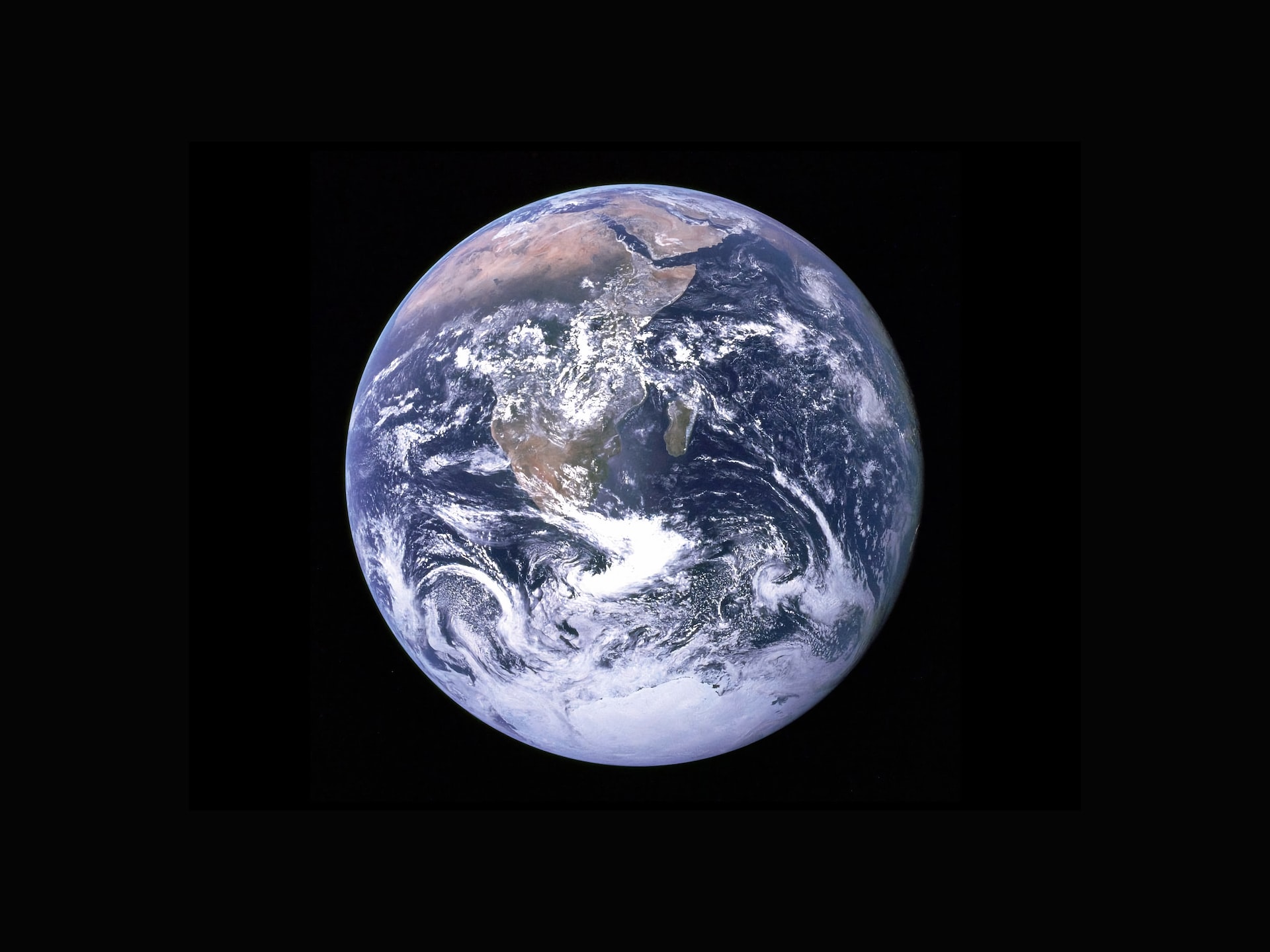Science
There’s a 1.9% chance a big asteroid could hit Earth in 2032. Scientists say don’t worry about it
By Natalie Stechyson, CBC News, RCI

But even though it’s rare for any asteroid impact risk to get above the one per cent mark, scientists stress that they’re not worried. An impact with Earth is not very likely, Richard Moissl, head of the Planetary Defence Office with the European Space Agency (ESA), told CBC’s The Current Wednesday. (File Photo: NASA/Unsplash)
Near-Earth asteroid known as 2024 YR4 is estimated to be 40 to 100 metres across
Look at it this way — there’s almost a 99 per cent chance an asteroid up to the size of a football field won’t hit the Earth in eight years.
Still, there’s up to a two per cent chance it will, according to NASA (new window) and the European Space Agency (new window) (ESA). And it’s understandable if you don’t love those odds. As one popular space TikToker points out (new window), sports fans know those one per cent-ers sink all the time.
But even though it’s rare for any asteroid impact risk to get above the one per cent mark, scientists stress that they’re not worried. An impact with Earth is not very likely,
Richard Moissl, head of the Planetary Defence Office with the European Space Agency (ESA), told CBC’s The Current Wednesday. (new window)
We’re not at a direct threat. We’re not in immediate risk. This is not an alert. This is not a crisis situation,
Moissl said.
First spotted last month by a telescope in Chile, the near-Earth asteroid known as 2024 YR4 is estimated to be 40 to 100 metres across. It’s travelling at around 15 times the speed of a high-velocity bullet. It is now moving away from Earth but will return in 2028.
And if it does impact earth (again — a 98 to 99 per cent chance it won’t), it’s estimated to happen on Dec. 22, 2032. The probability of impact changes over time as more analysis comes in.
As of Wednesday, NASA (new window) put the impact probability at about one in 53, or 1.9 per cent. The day before, it was 1.6 per cent.
It’s quite unusual. It’s not a danger yet, but it’s so unusual that we take a very close look at this one,
Moissl said.
It’s enough for the International Asteroid Warning Network (new window) (IAWN) to issue its first-ever Potential Asteroid Impact Notification (new window). Its notification threshold is one per cent.
Hitting the one per cent impact probability is a rare event indeed,
IAWN manager Tim Spahr told NPR this week. (new window)
IAWN predicts (new window) that the impact risk corridor extends across the eastern Pacific Ocean, northern South America, the Atlantic Ocean, Africa, the Arabian Sea and South Asia. Damage from the blast could extend 50 kilometres from the site of impact.
What we know about the asteroid
The asteroid came closest to Earth on Christmas Day — passing within roughly 800,000 kilometres of Earth, about twice the distance of the moon. It was discovered two days later.
We are not worried at all — because of this 99 per cent chance it will miss,
Paul Chodas, director of NASA’s Center for Near-Earth Object Studies, said in a news conference last week. But it deserves attention.
The asteroid will gradually fade from view over the next few months, according to NASA and the European Space Agency. Until then, some of the world’s most powerful telescopes will keep monitoring it to better determine its size and path. Once out of sight, it won’t be visible until it passes our way again in 2028.
NASA explains the asteroid is rated a Level 3 on the Torino Impact Hazard Scale (new window), a tool for categorizing potential Earth impact events. The scale describes Level 3 as a close encounter, meriting attention by astronomers
and is capable of localized destruction.
A Level 10, on the other hand, is a certain collision capable of causing global climatic catastrophe that may threaten the future of civilization as we know it.
These occur on average once per 100,000 years.
Let me tell you, the most likely scenario is that by the time we lose sight of the object in April this year, the impact probabilities will have lowered enough not to worry about this object anymore,
Juan Luis Cano of the Planetary Defence Office told Reuters.
Scientists will soon meet to discuss Earth’s response if the asteroid’s impact probability remains above the one per cent threshold, which could include crashing a spacecraft into it to deflect it. Two UN-endorsed international asteroid response groups are considering their next steps, the ESA (new window) explains on its website.
Comparable to 1908 Siberia impact
To put the odds in perspective, Gizmodo (new window) spoke with a Harvard University statistician. He explained that you have a one-in-52 chance of pulling the ace of spades from a deck of cards — almost exactly the same as the odds calculated Wednesday of the asteroid hitting earth in 2032.
An asteroid of this size impacts Earth, on average, every few thousand years, ESA noted.
Moissl explained that — and again, it likely won’t — if 2024 YR4 does hit the Earth, it would be comparable to the 1908 Tunguska asteroid impact (new window). According to NASA, on June 30, 1908, an asteroid exploded in the sky over Siberia. It had an estimated diameter of about 40 metres.
This event, flattened 2,000 square kilometres of forest and sent seismic waves through the area and was felt hundreds of kilometres away,
Moissl said.
Most of the witnesses were reindeer herders about 32 kilometres away, NASA explained.
WATCH | What we learned from Asteroid Bennu samples:
Asteroid Bennu samples contain ‘building blocks’ of life on Earth
Scientists say samples harvested from NASA’s historic mission to the asteroid Bennu contain the precursors to life on Earth, including the building blocks to DNA, RNA and proteins. Canadians involved in the mission say future ones could reveal even more about how the planet was formed.
They described seeing a fireball trailing smoke, then a flash brighter than the sun, followed by a loud noise like thunder. Those closest to the event reported being blown into the air and knocked unconscious, and their dwellings damaged or destroyed,
NASA says.
Fortunately, because of the low population density, very few human casualties resulted, but many herds of reindeer perished.
According to NASA, currently no other known large asteroids have an impact probability above one per cent.
This article is republished from RCI.





















